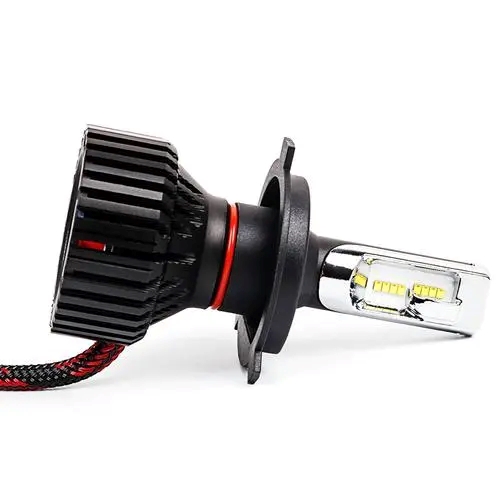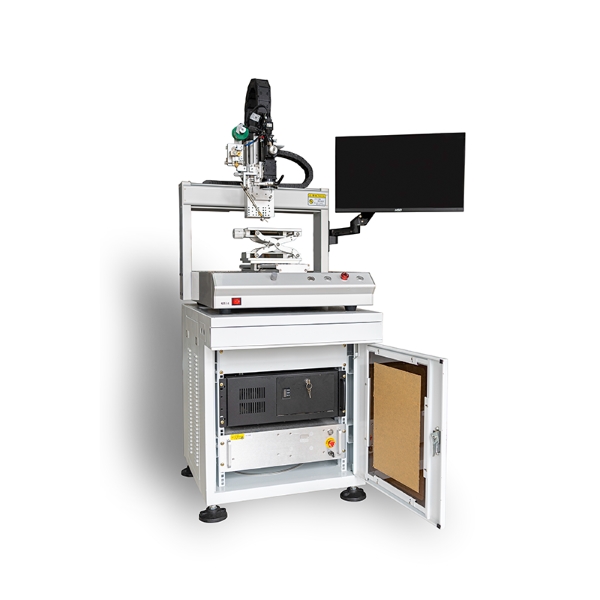Application of Laser Soldering Technology in Automotive LED Light Manufacturing
Currently, mainstream automotive lighting primarily includes halogen, xenon, and LED lights. Halogen headlights remain the most common type, equipped in over 60% of vehicles on the market due to their low manufacturing/maintenance costs and ease of replacement, despite their limited brightness. Xenon headlights have gained popularity for their high luminosity and long illumination range, making them a favorite among car owners.
With continuous high-tech innovation in China's automotive market, an increasing number of manufacturers are adopting LED automotive lights as their preferred lighting solution. LED automotive lights refer to lighting fixtures that utilize LED technology for both interior and exterior illumination. Their high energy conversion efficiency and exceptional lifespan have not only made them prevalent in residential lighting but have also established them as the first choice for automotive lighting designers in the industry.

A single automotive LED consists of gold wires, an LED chip, a reflector ring, cathode conductor, plastic conductor, and anode conductor. The core component of the light-emitting diode is a chip composed of P-type semiconductor and N-type semiconductor, with a transition layer between them forming the PN junction. In the PN junction of certain semiconductor materials, when injected minority carriers recombine with majority carriers, the excess energy is released in the form of light, thereby directly converting electrical energy into light energy. When a reverse voltage is applied to the PN junction, it becomes difficult to inject minority carriers, and consequently no light is emitted. Diodes manufactured based on this principle of injection luminescence are called light-emitting diodes, commonly known as LEDs.
As every component in the automotive industry ultimately reaches consumers, the application of new technologies demands higher standards for both product quality and production capacity. Traditional LED soldering primarily relies on manual operations using wave soldering, reflow soldering, and soldering irons. However, these methods occasionally cause irreversible damage to LED chips under high furnace temperatures. Selective soldering with irons introduces multiple issues including contact welding, iron oxidation, product compression damage, and precision loss in robotic physical contact - all adversely affecting production yield. These methods also require extensive manual re-inspection, consuming significant time and labor resources.
With increasing consumer demands and advancements in LED technology, manufacturers are actively seeking more reliable alternatives to conventional methods. Laser soldering technology has consequently emerged as the preferred solution in both automotive and lighting industries.
During LED soldering processes, most equipment manufacturers currently employ open-loop current regulation due to the absence of closed-loop control systems. This frequently results in laser-induced damage, burning, or soldering defects. Even when temperature control devices are implemented, their inability to precisely regulate the laser often leads to delayed thermal responses and subsequent LED damage.
Songsheng Optoelectronics' laser soldering system integrates:
Multi-axis servo modules
Real-time temperature feedback systems
CCD coaxial alignment systems
Semiconductor laser units
Through years of process refinement, Songsheng has independently developed intelligent soft-soldering software compatible with multiple file formats. The proprietary PID online temperature regulation system ensures precise constant-temperature soldering, guaranteeing both production yield and welding precision.

Features of Songsheng Optoelectronics' Closed-Loop Temperature-Controlled Laser Soldering System:
Non-contact soldering process – Eliminates mechanical stress damage while minimizing thermal impact.
Multi-axis intelligent work platform (optional) – Adapts to diverse complex and precision soldering applications.
Coaxial CCD imaging alignment & process monitoring – Provides real-time soldering visualization with automatic position correction to ensure micron-level accuracy in automated production.
Proprietary temperature feedback system – Enables direct solder joint temperature control with live thermal profile display for guaranteed soldering quality.
Quad-coaxial optical integration – Unifies laser, CCD, pyrometer, and guidance laser in one optical path, solving industry alignment challenges without complex calibration.
High-precision performance – Achieves 0.2mm minimum solder joint diameter at 99% yield rate with ultra-short per-joint processing time.
Triaxial (XYZ) positioning system – Supports versatile applications across various component geometries.
Contact: Mr.Xiao
Phone: +86-13385280662
E-mail: market001@whlaser.cn
Add: Room 02, Floor 5, Building 9, Gezhouba Sun City, No. 40, Gaoxin 4th Road, Donghu New Technology Development Zone, Wuhan